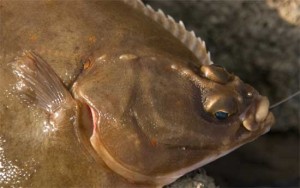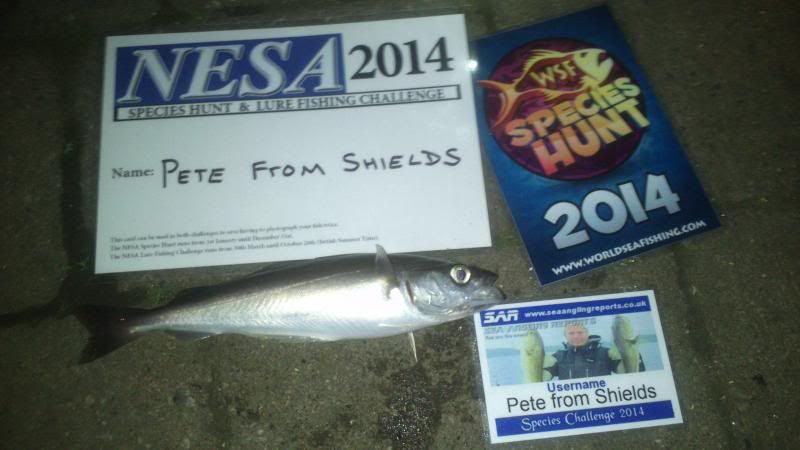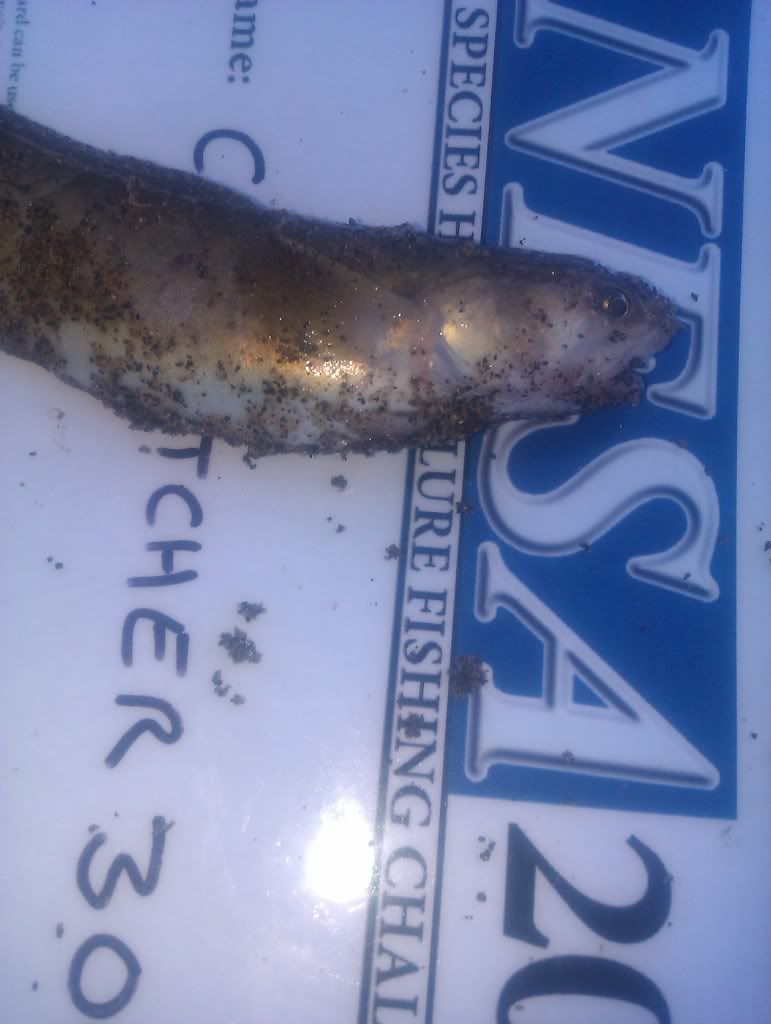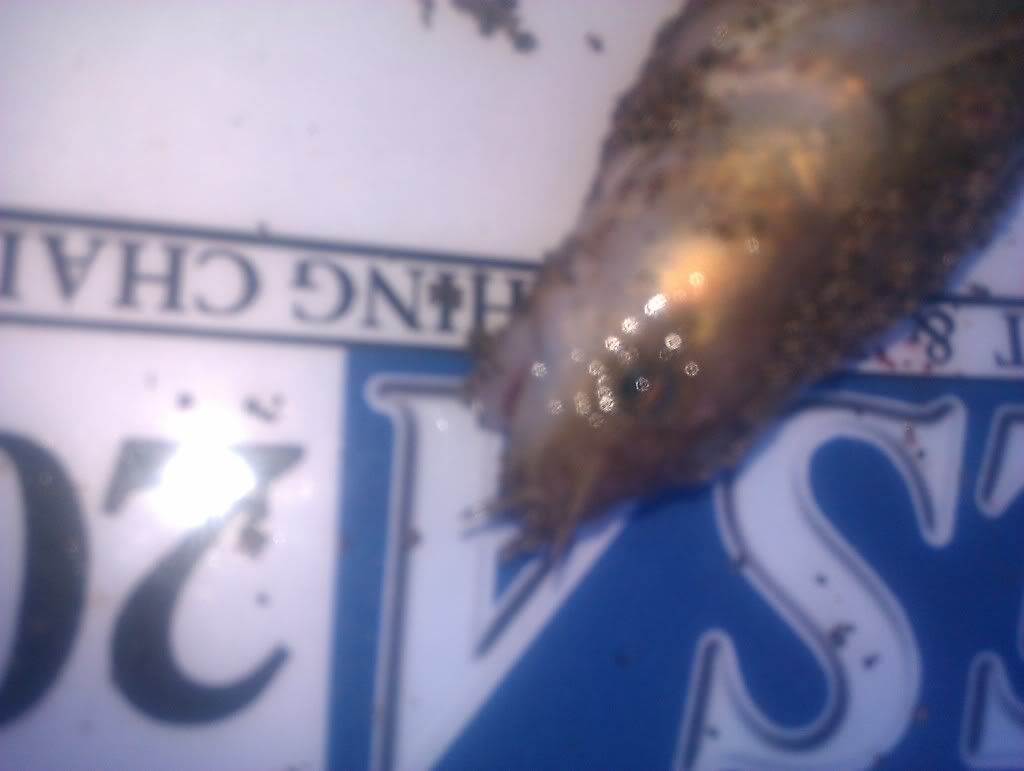You are using an out of date browser. It may not display this or other websites correctly.
You should upgrade or use an alternative browser.
You should upgrade or use an alternative browser.
NESA Species Hunt 2014
- Thread starter Thunderpants
- Start date
codfather145
Well-known member
NESA Species Hunt 2014
Hi mate here is some fish me and mad rob got on Sunday




Flounder for me. Flounder,5 beared rockling and shore rockling for mad rob aka crabstick
Hi mate here is some fish me and mad rob got on Sunday




Flounder for me. Flounder,5 beared rockling and shore rockling for mad rob aka crabstick
Last edited:
Thunderpants
Well-known member
Well done lads. Table updated.
John findley
Well-known member
.
codcatcher3000
Well-known member
lambtonworm
Well-known member
Thunderpants
Well-known member
It's an Eelpout (I'm getting deja vu here
Table updated.
Aqua-holic
Well-known member
Thunderpants
Well-known member
Your LS Sea Scorpion puts you clear on top of the league. Well done.
Sorry but that picture shows a spotty flounder not a plaice. Flounders often have orange spots as well.
An easy way to confirm a plaice is by the bony lumps they have on the head like this....

Another way is to look at the lateral line which is smooth on a plaice but is a line of small hard lumps on a flounder. They are also a bit rounder in shape. Hope this helps.
Table updated.
Sorry but that picture shows a spotty flounder not a plaice. Flounders often have orange spots as well.
An easy way to confirm a plaice is by the bony lumps they have on the head like this....

Another way is to look at the lateral line which is smooth on a plaice but is a line of small hard lumps on a flounder. They are also a bit rounder in shape. Hope this helps.
Table updated.
Last edited:
Aqua-holic
Well-known member
Your LS Sea Scorpion puts you clear on top of the league. Well done.
Sorry but that picture shows a spotty flounder not a plaice. Flounders often have orange spots as well.
An easy way to confirm a plaice is by the bony lumps they have on the head like this....

Another way is to look at the lateral line which is smooth on a plaice but is a line of small hard lumps on a flounder. They are also a bit rounder in shape. Hope this helps.
Table updated.
Thanks for the info always get confused by the flattys lol
Juliogeordio
Well-known member
That's got some lovely markings and colours for a sea scorpian
Thunderpants
Well-known member
Thanks for the info always get confused by the flattys lol
No problem mate. Here are some pics that should help with your flatty id. Note the semi-circle curve in the lateral line next to the pectoral fin on the dab, the head bumps on the plaice and the rough lateral line on the flounder all very distinctive id characteristics.

Pete from shields
Well-known member
Here's a great article on identification of flatfish, well worth a bookmark.
Plaice, Dab and Flounder differences - Flatfish Identification Fishing
Plaice, Dab and Flounder differences - Flatfish Identification Fishing
Thunderpants
Well-known member
Here are some id pics for ToonboyMC (and anyone else whos interested) showing the difference between a blenny and an eelpout....
Eelpouts look a bit like a blenny and one of their common names is "viviparous blenny" but they are in fact not a member of the blenny family at all and are actually in their own Eelpout family. If you look at the pics below you can see that eelpouts are typically a lot longer than blennys (twice as long or more) and have different shaped heads being broad at the back and tapering towards the mouth. The blenny has a more flat fronted head. the example shown is the common blenny (also called a shanny). Hope this helps.

Eelpouts look a bit like a blenny and one of their common names is "viviparous blenny" but they are in fact not a member of the blenny family at all and are actually in their own Eelpout family. If you look at the pics below you can see that eelpouts are typically a lot longer than blennys (twice as long or more) and have different shaped heads being broad at the back and tapering towards the mouth. The blenny has a more flat fronted head. the example shown is the common blenny (also called a shanny). Hope this helps.

Last edited:
Thunderpants
Well-known member
Eelpout for me 


three for me
flounder http://i572.photobucket.com/albums/ss163/f14rty/2014-03-13225946_zps938120a3.jpg
dab http://i572.photobucket.com/albums/ss163/f14rty/2014-03-13222321_zpscaf6d94e.jpg
unsure on this one a think its a whiting http://i572.photobucket.com/albums/ss163/f14rty/2014-03-13220152_zps9d488c97.jpg
flounder http://i572.photobucket.com/albums/ss163/f14rty/2014-03-13225946_zps938120a3.jpg
dab http://i572.photobucket.com/albums/ss163/f14rty/2014-03-13222321_zpscaf6d94e.jpg
unsure on this one a think its a whiting http://i572.photobucket.com/albums/ss163/f14rty/2014-03-13220152_zps9d488c97.jpg














